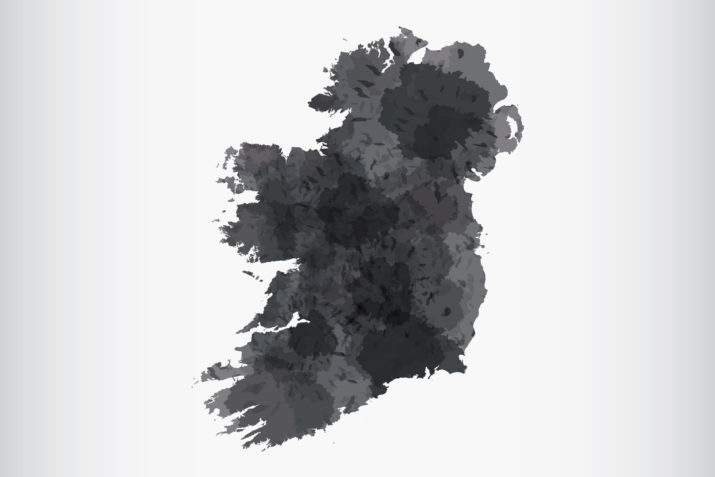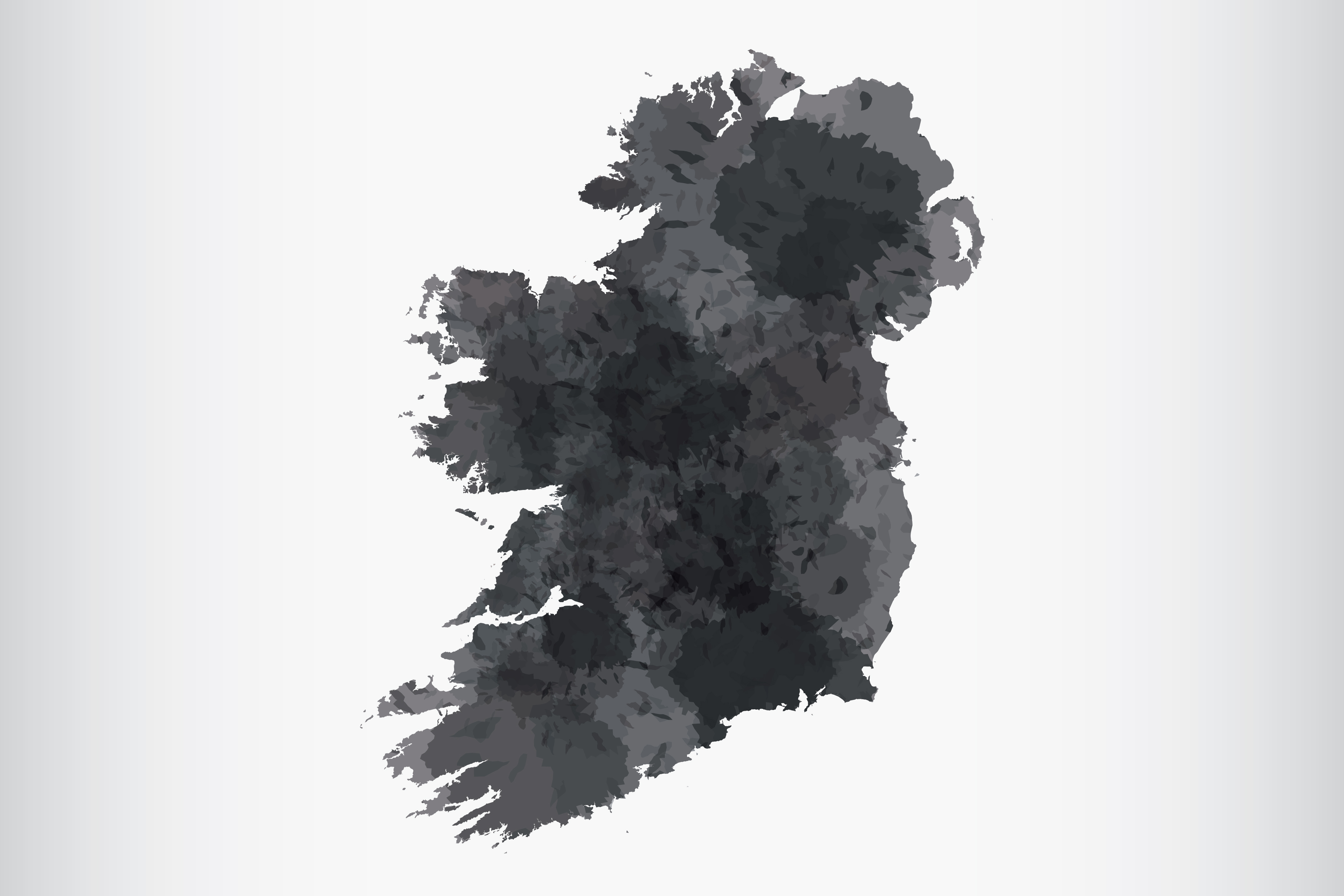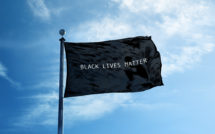

This is part of our special feature, United in Diversity.
The critical conversation concerning the migrant experience tends to focus on those countries on the front line: first-contact issues in Italy, capacity challenges in Germany, or right-wing responses in the United States. Ireland, at the edge of the EU and with only a fraction of the migrant refugee population, is often overlooked in context of conflicts in assimilation and minority status. Yet with its own migrant community, Ireland nonetheless participates in a larger hegemonic dialogue wherein immigrants express the intersecting discourses of belonging and exclusion.
Specifically, this study examines Box,[1] a 2015 short film written and directed by Jijo S. Palatty and the atheist Indo-Irish collective called Neuron to, as their Facebook site claims, interrogate “religious extremism, racial and religious prejudice, social freedom in insular minority communities and feminism, among many other things in an Irish intercultural context where communities get increasingly ‘boxed’ with the turn [the] world has taken lately.”[2] This nexus of discourses is rendered even more complex given the influence of mass media in racial profiling and the dissolution of religious orthodoxy. The migrant community presented here is a transnational mingling of identities, a representation of the differences in values and philosophies within what is often seen as a monolithic community.
Nominally the story of a community’s desire to control an eighteen-year-old woman, Box expands to explore conflicting modes of cultural patriarchal hegemony as mediated by access to public spaces, both literal/geographical and figurative/digital. Discourses of assimilation emerge as new forms of patriarchal expectations, translated by both tradition and mass communication. Yet the latter mode of information transmission proves to be a challenge to dominant cultural pressures as the immediate and mass distribution of images and narratives via cell phones and viral videos unsettle control, both providing a means of resisting hegemony and creating a sense of irrational fear of uncontextualized images of terror as presented by the Other. Hence, the Other’s right to self-representation within this nexus of viral imaging-shaping underlies the film’s theme of self-determination. Modern Ireland’s own religious and colonized history thus complicates the expected narratives of minority oppression and liberal assimilation, rendering visible subtler narratives about the politics of terror and threats of atheism in theocratic state systems.
The film opens with a group of Indian Christian men gathered outside an apartment complex to perform a blessing over a young boy, held firmly between two of the men. Their attention, however, is soon diverted to a crisis over the boy’s sister (identified as “Indian Girl” in the credits), who has just turned eighteen and is unwilling to conform to the sect’s expectations of female behavior. When she leaves and the minister departs to catch a plane, the men take it upon themselves to follow the young woman, since she is, as one man says, determined to celebrate her birthday.
Parallel to the young woman’s departure, her Muslim neighbor (identified as “Muslim Woman”), dressed in traditional garments, is walking with a paper-wrapped parcel, frequently and nervously looking behind her. The two meet, and the Indian Girl persuades her to go into a pub, stating that the men following her will never follow them in. They do, but are unable to come to a decision regarding what to do about her. Within the pub, three instances of discursive conflict arise: the men’s confusion about what to do, the Young Girl and the Muslim Woman’s conversation among themselves and other patrons, and a “Young Plumber,” who is afraid of the Muslim Woman and her mysterious package. Eventually, the women leave, quietly triumphant, one to the post office to mail her parcel and the other having met a young man in the pub, and return home, exchanging a brief wave as they enter their apartments.
While the film appears to be exploring themes of assimilation and mutual acceptance, two concurrent themes immediately emerge. First, there are the religious constraints over femininity. The attempt to assert control over the Indian Woman is immediate and physical, with one of the men (identified as “Extremist” in the credits) suggesting that they should lock her up. This idea is immediately discarded, as the modern secular state would not allow it. Moreover, the minister tells her that “ornaments” are not allowed in their church. Her friend has a veil, which she had only recently started to wear. Juxtaposed against these women is the group of men, loosely united by their mission to coerce her to obey but divided by (eponymous) personality: one is an Extremist, another a Communist, a hapless Father, a Liberal (who expresses that all religions have “extremists”), and a Phone Guy.
The other theme is the undercurrent of religious terror, which Ireland has—so far—been spared, although sectarian violence is a constant threat, exacerbated by the specter of Brexit and its possible effect on the Good Friday Agreement. Early in the film, a news report of a car full of explosives, which, at one time, would have triggered recollections of the IRA or UDF plots, is now firmly attached to Islamic extremism. Indeed, the viewer’s first encounter with the Muslim Woman is of her carrying the non-descript, paper-wrapped parcel, glancing behind her, nervously. The audience is thus invited to see her as a potential terrorist, making us complicit participants in the paranoia exhibited by one of the pub’s patron’s (“Young Plumber”), who clearly sees the Muslim Woman as a potential threat. His reaction is informed by a video he has seen of explosives in a car. This video, which is “viral” as he says, suggests the viral nature of terror—disseminated via cell phone video—in the mass media world.[3]
The backdrop of the film’s familial and religious tension is Ireland, a Catholic-dominated and patriarchal nation wherein this nexus of immigrants live. Negotiating a dominant culture would seem at first to be a relatively simple affair, as both the Indian Girl and Muslim Woman meet reasonable exemplars of modern, secular Ireland: a young man who tells the Girl to be true to herself and the other, a well-traveled man who offers her a lift to the Post Office respectively. Upon investigation, though, the film appears to shift the women from one patriarchal system—Pentecostal Christianity—to another—the masculine world of the Irish Pub—suggesting instead a mere transfer of discursive power. The Pub stands as a singular manifestation of Irish culture, and the Young Girl’s “transgression” into that space and her friend’s unease within that space reflect the migrant’s bifurcated response to assimilationist policies and attitudes. While the Young Girl revels in her first alcoholic drink (a glass of Guinness) and establishes a rapport with a young man, her friend accepts only orange juice and eventually a ride to the post office, albeit riding in the back seat. Both responses are equally valid, each reflects self-determination; yet such responses are made possible by negotiating with masculine representations of modern Ireland: a free-thinking young man and an older, coffee-drinking gentleman who had spent time in Dubai.
While the reaction of the Young Plumber in the pub to the Muslim Woman is meant to satirize the media-infused fear of the Other promulgated by War on Terror, his response reveals an undercurrent in the country among policymakers that Ireland is a “soft target…. Europe’s weakest link in terms of security, defence and emergency response capability.”[4] In the years since the film’s release, links to current terror networks have emerged in Dublin, including money-laundering schemes for ISIS and participants in the London Bridge attacks.[5] The film recognizes the power of the mass dissemination of images, with phone alerts stoking fears of bombs—a triggering reminder of Ireland’s Troubles—and the War on Terror’s identification of Muslims as potential threats.
Moreover, Ireland’s position regarding the migrant experience also requires some examination within this context. For decades, a net exporter of people, Ireland has long suffered from a drain of young people seeking greater opportunities elsewhere; only more recently has it become a migration destination. As Lentin notes, Ireland’s relationship to these new migrant communities was strongly influenced by economic considerations, with “dispersal and direct provision policies…and the (often enthusiastic) adoption by migrants of state discourses of interculturalism, diversity and integration.”[6] The assimilationist narrative suggested by the film is undercut both by the viral fear of terror and by the reality of the migrant experience in Ireland, resulting in increased cultural domination by the host country. Fear of difference challenges the embrace of diversity. An economic dimension of this conflict may be seen in the shift in attitude toward migrants following the Celtic Tiger period, as the recession saw a drop in public discourses concerning the benefits of intercultural diversity. Lentin observes that, “since the recession, immigration, interculturalism and integration played no part in the 2011 elections campaign, as anxieties about emigration returned.”[7] Such anxieties are linked with images of terror, although the Counter Extremism Project found “a June 2017 Gallup poll that 32 percent of Irish citizens felt acts of terrorism in Ireland by non-residents were a serious problem, while 38 percent felt terrorism by residents was a serious problem.”[8] Hence, while Box depicts a seemingly benevolent and secular Ireland, the immigrant reality, particularly given Ireland’s increased awareness of its still-peripheral role in terror networks, remains a liminal experience.
Such liminality is addressed by the film in several key ways. First, the film acknowledges a significant point: the migrant community is complex, with conflicting personalities within it. The men in the film, although all belonging to the religious community, have markedly different responses to both the coercive power of religion and the control of femininity. Perhaps the most significant determinant of this collectivist film is the right of the migrant to self-representation. Far too often, migrants are outwardly constructed, figures of pathos or—as above—of fear, Others who serve to further the political, cultural, or social agendas of various entities, even those whose mission it is to help such communities integrate or seek resources. Box participates in such a mission, as it was supported by the Arts Council Ireland’s “Artist in the Community” scheme, which seeks “to encourage meaningful collaboration between communities of place and/or interest and artists.” State support of the arts in the Republic of Ireland has been strong, and it is a testament to the mission of the Arts Council that it potentially supports the self-determination and self-representation of the migrant communities. However, as De Tona and Moreno point out, migrant associations often find themselves in competition with local groups for such funding, forcing them into the role of “specialists in cultural activity, the only field of action left to them.”[9]
Neuron navigates a more ambivalent route through this cultural pressure. Rather than locating the nexus of identity within an assumed cultural center or as resistance to the encroachment of Irish homogeneity, this collaborative reproduction of the immigrant experience reflects Walter Benjamin’s assertion of “modern man’s legitimate claim to being reproduced,”[10] or, more accurately, the right to reproduce themselves, outside the influence of a studio system, cultic organization, or even a state (government support notwithstanding), and consequently elude the kind of dominant culture categorization (to “put you in a box” as an Irish character tells the Indian Girl). Thus, this film and its potential viral nature form a vibrant point of possibility for the migrant community, as it challenges the dominant culture’s attempt to appropriate the minority culture via assimilationist narratives, which often strive to reproduce ideas of cultural and social homogeneity. The viral terror video and Box share the same mode of dissemination—social media platforms—thereby locating a shared identity not in ethnic categories or geographical space, but rather via a transnational exchange of discourses. The immediate transmission of information via social media platforms, ubiquitous in the film, makes the establishment of the “box” impossible: phones are constantly proffering alerts and information, distracting characters and making a coherent patriarchal response to the challenge posed by an empowered eighteen-year-old Young Girl impossible. Instead, such “reception in distraction,”[11] as Benjamin notes, creates the opportunity for the necessary critical distance which challenges the received authority of religion, patriarchy, and cultic aestheticizing; consequently, even the hegemony’s scaffolded Othering process, which requires such cultic aestheticization, is checked by counter-narratives.
The immigrant experience represented by Box reflects a migrant community as it is: a transnational intersection of identities and pressures, with differing aspirations and values. Aligned with Neuron’s mission, the film presents a humorous account of attempts to maintain a cultural and religious homogeneity against the pressures of a media- and technology-enabled dominant culture. The freedom to be found within the secularism of this dominant culture, even if such freedom is, again, facilitated by a mere transfer of one masculine construction to another, clearly emerges from Ireland’s relative liberalism as well as from the right to self-representation and -determination as promised by film. The cultic aura of Christianity, of ethnic identity, and even of hegemonic discourses are constantly threatened by the immediate promulgation of filmic representations, offering the Young Girl and the Muslim Woman a liminal freedom that can only be constantly negotiated. The film explores both prejudice and freedom as consequences of the modern secular state’s engagement with insular migrant communities, ruptures within the intersection of dominant and minority discourses. The fear and ignorance that results in religious extremism and ethnic prejudice finds itself in opposition against the liberal, modern discourses that creates a Western ideal of freedom. While neither is absolute, as prejudice is viral and freedom must be negotiated with the dominant culture, Neuron demonstrates how technology’s promise as a means of self-representation is a powerful tool for meaningful and self-expression.
Daniel Shea is Professor of English and Chair of Arts and Letters at Mount Saint Mary College in New York’s Hudson Valley region. His research interests include James Joyce, Walter Benjamin and Mary Lavin. Currently, he is studying forms of digital autoethnography within the context of Irish migrant communities.
References
Benjamin, Walter. “The Work of Art in the Age of Mechanical Reproduction.” In Illuminations, ed. Hannah Arendt, 217-252. New York: Schocken Books, 1968.
Box. Video, directed by Jijo S. Palatty (2015, Ireland). https://vimeo.com/178930716
De Tona, Carla and Elena Moreo. “Theorizing Migrant-Led Activism.” In Migrant Activism and Integration from Below in Ireland, ed. Ronit Lentin and Elena Moreo, 21-41. New York: Palgrave Macmillan, 2012.
Irish Examiner. “Terror Attacks in Ireland: Europe’s Weakest Link on Security.” January 02, 2018. https://www.irishtimes.com/news/crime-and-law/why-isis-terrorist-s-irish-links-are-cause-of-such-concern-1.3108760
Lally, Conor. “Why Isis terrorist’s Irish Links are Cause of Such Concern.” The Irish Times. June 5, 2017. https://www.irishtimes.com/news/crime-and-law/why-isis-terrorist-s-irish-links-are-cause-of-such-concern-1.3108760
Lentin, Ronit. “Introduction: Immigration in Ireland and Migrant-Led Activism.” In Migrant Activism and Integration from Below in Ireland, ed. Ronit Lentin and Elena Moreo, 1-20. New York: Palgrave Macmillan, 2012.
Lentin, Ronit. “’There is no Movement’: A Brief History of Migrant-Led Activism in Ireland.” In Migrant Activism and Integration from Below in Ireland, ed. Ronit Lentin and Elena Moreo, 42-71. New York: Palgrave Macmillan, 2012.
[1] J. S. Palatty. 2015. Box. Video, 16:05 min. https://vimeo.com/178930716
[2] https://es-la.facebook.com/pg/boxtheshort/posts/
[3] Irish Examiner. “Terror Attacks in Ireland: Europe’s Weakest Link on Security.” January 02, 2018. https://www.irishexaminer.com/breakingnews/views/ourview/terror-attacks-in-ireland-europes-weakest-link-on-security-820889.html
[4] https://www.counterextremism.com/countries/ireland
[5] Conor Lally. “Why Isis Terrorist’s Irish Links are Cause of Such Concern.” The Irish Times. June 5, 2017. https://www.irishtimes.com/news/crime-and-law/why-isis-terrorist-s-irish-links-are-cause-of-such-concern-1.3108760
[6] Ronit Lentin. “’There is no Movement’: A Brief History of Migrant-Led Activism in Ireland,” in Migrant Activism and Integration from Below in Ireland, ed. Ronit Lentin and Elena Moreo (New York: Palgrave Macmillan, 2012), 44.
[7] Ronit Lentin. “Introduction: Immigration in Ireland and Migrant-Led Activism,” in Migrant Activism and Integration from Below in Ireland, ed. Ronit Lentin and Elena Moreo (New York: Palgrave Macmillan, 2012), 8.
[8] https://www.counterextremism.com/countries/ireland
[9] Carla De Tona and Elena Moreo. “Theorizing Migrant-Led Activism,” in Migrant Activism and Integration from Below in Ireland, ed. Ronit Lentin and Elena Moreo (Palgrave Macmillan), 29.
[10] Walter Benjamin. “The Work of Art in the Age of Mechanical Reproduction,” in Illuminations, ed. Hannah Arendt (New York: Schocken Books, 1968), 232.
[11] Ibid., 230.
Published on April 4, 2019.
Photo: Ireland Watercolor vector map | Shutterstock




